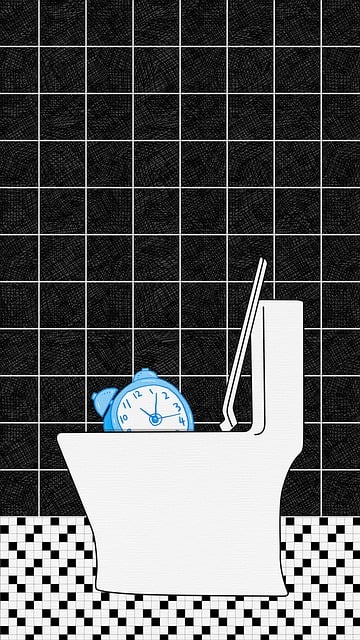Toilet issues range from minor leaks and blockages to major plumbing problems. Regular maintenance, proper tools & materials, and understanding common causes are key to DIY repairs or avoiding costly professional installations. Turn off water supply, remove old toilet, position new one, reconnect water, and test functionality for simple installations. Leaks often stem from worn flappers; complex issues like running toilets require professional help. Regular checks for leaks, non-abrasive cleaning, and assessments prevent future problems. For structural damage or outdated plumbing, professionals offer tailored solutions, ensuring reliable toilet function and adherence to local codes.
Toilet Installation can transform your bathroom, but understanding common issues is key. This guide tackles everything from identifying problems like leaks and clogs to ensuring a successful toilet installation. We’ll walk you through essential tools, materials, and step-by-step instructions for both repairs and new installations. Learn how to maintain your toilet for longevity or know when to call the professionals for complex issues. Get ready to tackle any toilet-related challenge with confidence.
Understanding Common Toilet Issues and Their Causes

Toilet issues can range from minor inconveniences to major plumbing problems. Understanding common problems and their causes is key when it comes to toilet repair or installation. Leaks, for instance, often stem from worn-out flappers or seals, simple yet common fixes during toilet installations. Blockages are another frequent issue; caused by everything from foreign objects to mineral buildup, these can be addressed with the right tools and know-how, preventing costly emergency calls.
Regular maintenance plays a significant role in averting major toilet problems. This includes checking for leaks regularly, cleaning out drains, and ensuring proper flushing mechanisms. By being proactive, homeowners can save time, money, and potential embarrassment from sudden toilet malfunctions. For minor issues, DIY repairs are often feasible; however, complex problems may require the expertise of professional plumbers, especially during new toilet installations.
Tools and Materials Required for Installation and Repairs

When tackling toilet installation or repair, having the right tools and materials is paramount for a successful outcome. Basic tools include wrenches (both open-end and adjustable), pliers, a utility knife, and a screwdriver set, as these are essential for loosening old components, cutting through plastic or metal parts, gripping tightly, and screwing in new fixtures.
For toilet installation, you’ll also need specific materials like a new toilet, wax rings, flange bolts, and toilet cement (or caulk). These items create a watertight seal between the toilet and the floor, ensuring efficient drainage and preventing leaks. Always check your local hardware store for recommended products suitable for your specific toilet model and plumbing setup.
Step-by-Step Guide to Installing a New Toilet

To install a new toilet, start by turning off the water supply to the toilet. This is typically done by locating and closing the stop valve under the sink or in the basement. Once the water is turned off, flush the toilet to remove any remaining water in the bowl. Next, remove the old toilet by loosening the bolts holding it in place using a wrench or pliers. Lift the toilet out carefully, being mindful of any pipes or cables that might still be connected.
With the old toilet removed, measure the existing floor space and ensure your new toilet fits properly. Adjust any measurements if needed, considering the size of the toilet and its base. Place the new toilet in position, aligning it with the waste pipe and ensuring it sits level. Secure it in place by tightening the bolts by hand first, then using a wrench to achieve a tight fit. Reconnect the water supply, opening the stop valve and checking for any leaks. Finally, flush the toilet to ensure everything is working correctly.
Troubleshooting Leaks and Other Frequent Problems

Toilet leaks are a common issue that many homeowners face, often indicating a problem with either the flapper valve or the seal. Start by checking the flapper, as it’s one of the most frequent causes. Over time, the flapper can become worn out and no longer create a proper seal, leading to constant water leakage. Replacing the flapper is usually a straightforward process that only requires a few basic tools. Most hardware stores carry various types of flappers, so you can find one suitable for your toilet model.
If replacing the flapper doesn’t solve the issue, the problem might be with the seal or the filling mechanism. Leaks can also occur due to an improperly adjusted float chain, which controls the water level in the tank. Tighten or adjust this chain if needed, ensuring it allows the right amount of water to fill the tank after each flush. For more complex problems, such as persistent leaks or a running toilet, consulting a professional plumber is recommended for efficient Toilet Installation and long-term solutions.
Tips for Efficient Toilet Maintenance and Longevity

Maintaining your toilet isn’t just about ensuring it functions properly; regular care can also extend its lifespan, saving you from costly Toilet Installation in the future. A simple yet effective strategy is to check for leaks regularly. Even minor dripping can lead to significant water waste and increased bills over time. Keep an eye out for any unusual noises or signs of moisture around the base of the toilet, as these could indicate potential issues.
Additionally, regular cleaning can go a long way. Use non-abrasive cleaners to avoid damaging the porcelain. Remove any debris or buildup from the flush mechanism and ensure the flapper seals correctly after each flush. These simple steps, combined with periodic checks for wear and tear, will contribute to the overall health of your toilet, ensuring it remains reliable for years to come without requiring frequent replacements.
When to Call in the Professionals: Expert Intervention for Complex Issues

When it comes to toilet installation or repair, most routine issues can often be tackled by homeowners as DIY projects. However, there are certain complex problems that demand professional expertise. If you’re facing challenges that extend beyond simple clogs or running toilets, it’s time to call in the pros. Complex issues like structural damage, outdated plumbing systems, or mysterious water leaks might seem daunting and could lead to further complications if not addressed correctly.
Professional plumbers are equipped to handle such situations with their specialized knowledge and tools. They can diagnose problems accurately, offer tailored solutions, and ensure long-lasting repairs. Toilet installation, especially in new construction or renovation projects, requires precision and adherence to local plumbing codes, which professionals are well-versed in. By leaving complex toilet issues to experts, you can avoid potential disasters and ensure your bathroom functions optimally.
